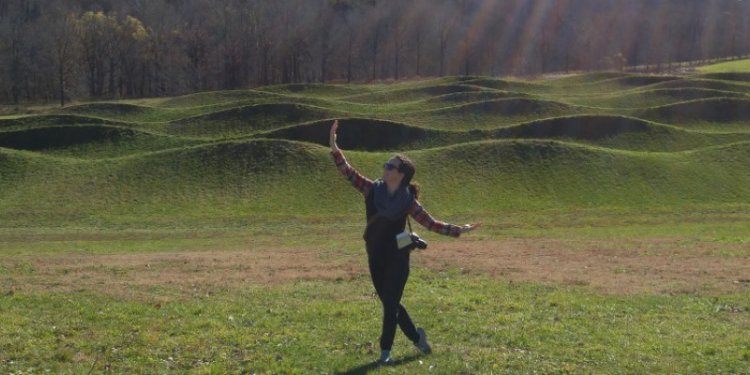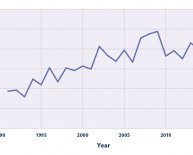
Environmental Protection Agency Philadelphia
EPA and the City of Philadelphia partner to advance innovative urban stormwater control.

It has been more than three hundred years since William Penn declared that Philadelphia would be a ‘Greene Country Towne’ and gave the city five public squares to alleviate the monotony of its street grid. Penn also recognized that a livable city needed clean water. Philadelphia was America’s first city to provide residents with drinking water and had one of the first sewer systems.
Most of that original infrastructure is still in use today, and Philadelphia's waterways have been subjected to centuries of urbanization, degrading their ecosystems and water quality. Philadelphia is working to reverse that trend, vying for the reality of ‘Greenest City in America’ by proposing that the principles of sustainability and stormwater management be implemented every time land is touched by development.
To get there, Philadelphia has partnered with EPA to advance the use of innovative techniques that mimic natural systems—green infrastructure—for urban wet weather pollution control.
In 2014, EPA provided almost $5 million in grants to five universities to support research to explore the financial and social costs and benefits associated with green infrastructure as a stormwater and wet weather pollution management tool.
Former EPA Deputy Administrator Bob Perciasepe and Nancy Sutley, Chair of the White House Council on Environmental Quality, braved a January, 2014 blizzard in Philadelphia to announce the research grants and promote the partnership.
“This partnership provides a unique opportunity to evaluate the early benefits, long-term performance, and economic success of green infrastructure practices in urban communities, ” said Perciasepe. “Through this research, we will gain valuable knowledge that can be applied across the United States to create a safer and more sustainable water supply.”
The research programs and their expected impacts:
- Scientists at Swarthmore College are using simulation models, evolutionary optimization, and spatial statistics to develop mathematical benefit functions that will estimate green infrastructure costs and predict benefits in their program, Performance and Effectiveness of Urban Green Infrastructure: Maximizing Benefits at the Subwatershed Scale through Measurement, Modeling, and Community-Based Implementation. Uncertainties in the results will be incorporated into an adaptive management process to evaluate trade-offs among different benefits. A team of researchers at University of New Hampshire are building public knowledge of green infrastructure in order to more effectively manage social, economic, and environmental aspects of water resources and improve management of related societal and ecosystem services through their program, Taking it to the Streets: Green Infrastructure for Sustainable Philadelphia Communities. Their objective is to demonstrate not simply physical stormwater management technologies, but rather to create a transformative setting within which the City and its citizens place stormwater management as the one of the highest land use priorities.
- A team of researchers at Temple University are using a Green Campus monitoring program, which serves as a site for demonstrating and evaluating green infrastructure in their project, An Integrated Strategy to Improve Green Infrastructure Approaches in Philadelphia. In addition, they will identify alternative finance tools to promote green infrastructure and assess the role of private capital markets for implementing green infrastructure in disadvantaged areas. The research will improve the knowledge base on green infrastructure and the risk management associated with alternative techniques and implementation approaches. These results will ultimately improve the ability of scientists, regulators, and decision-makers to protect the environment and public health.
- A Villanova University research team will monitor, develop, and demonstrate high-performing next generation green infrastructure practices that are required for highly urbanized communities in their program, Next Generation Volume Reduction Green Infrastructure Stormwater Control Measures in Support of Philadelphia’s Green City Clean Waters Initiative. The next generation green infrastructure will provide a sustainable long-term solution to combined sewer overflows in Philadelphia. A distributed approach to stormwater management has not yet been tried on a city-wide scale; thus, this project has the potential to change stormwater management internationally.
- University of Pennsylvania scientists are developing an in-depth understanding of motivation to invest in green infrastructure through their program, Enabling Citizens and Owners to Invest in Green Infrastructure in Philadelphia. At its conclusion, they will provide actionable policy analyses and usable tools that the City of Philadelphia could then choose to test or deploy in the future. The policy analysis will produce analytical models that can be used to shape the market for investment, target public subsidies and private investment, and achieve the environmental goals of the stormwater system. It will also provide a better understanding of how well policies that promote green infrastructure are working in Philadelphia and elsewhere.
Research findings from the EPA-supported research teams will support efforts such as Philadelphia’s Green City, Clean Waters, a 25-year plan to use innovative green infrastructure to protect and enhance watersheds and become a more sustainable city.
“EPA’s support has been key as we implement Philadelphia’s Green City, Clean Waters plan, ” noted Mayor Michael A. Nutter. “This forward thinking plan will not only result in better water quality for the City, but it will also provide a multitude of benefits for Philadelphians like cleaner air, revitalized green spaces, and even new economic opportunity. EPA’s commitment to making Green City, Clean Waters a model for the nation is confirmed by the creation of this grant program.”
EPA and the City of Philadelphia are working together to create a healthier and more livable city that will live up to William Penn’s vision for a “Greene Country Towne.” Lessons learned will help cities and other communities across the nation tap into the benefits of green infrastructure and join Philadelphia on the road to sustainability.






















